

The literal translation of the scientific name Trichoptera is "hairy wings" and arises from the covering of fine hairs on the wings. It is one of the main anatomical features that distinguishes Caddisflies from the Lepidoptera whose wings are covered by scales (literally "scaly wings"). The larvae of all caddisflies are aquatic, many of which build elaborate cases to protect and camouflage their bodies from potential predators.
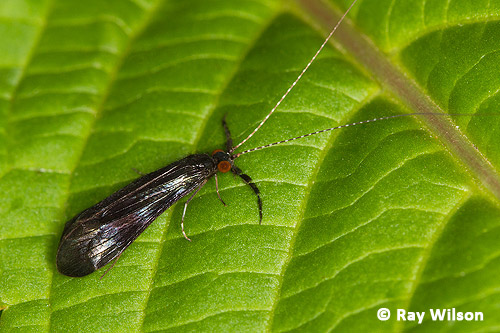
The mouthparts of adult caddisflies are much reduced and although most can lap up water or nectar, many do not feed at all and their adult existence is a race to breed before the energy and fat stores they built up as larvae runs out. In the males of many species the maxillary palps have been adapted into secondary sexual organs. The long, furry palps of Mystacides azurea (above) wrap around the abdomen of the female during mating to improve his grip and make it less likely that he will be dislodged by a rival male in the mating swarm.
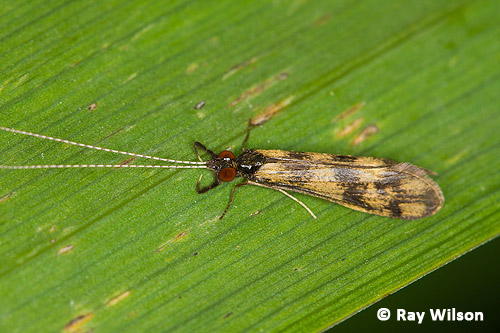
The combination of strongly patterned wings, red eyes and enormously long white antennae render Mystacides longicornis unmistakable in the UK. It is a common and widespread species throughout Britain.
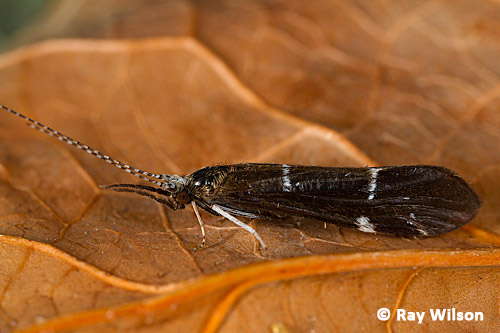
Anthripsodes albifrons is one of several similarly marked caddis flies but can be distinguished by its bright white hairs on the top of its head and pure white wing markings. It is common throughout England, Wales and mainland Scotland.
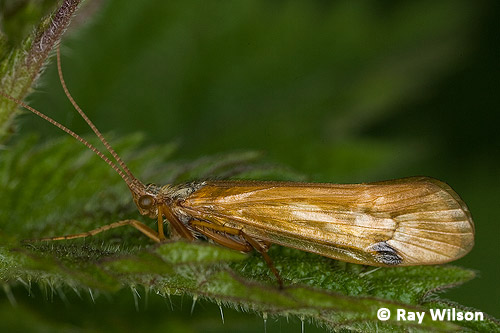
Limnephilus binotatus is a specialist of reed swamp habitats and has a quite local distribution in Britain.
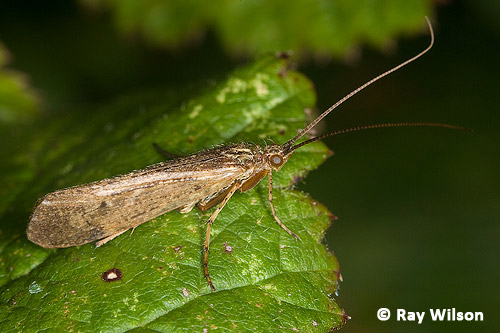
Limnephilus affinis is able to tolerate low levels of salinity and is common on saltmarshes.
Thanks to Dr. Ian Wallace for identifying the Limnephilus species for me.
Ray Wilson owns the copyright of all images on this site.
They may not be used or copied in any form without prior written permission.
raywilsonphotography@googlemail.com